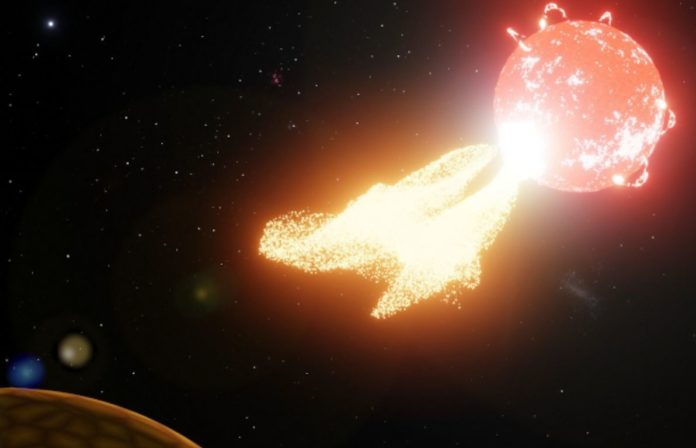New discoveries about space weather at Proxima Centauri, the star closest to Earth, excluding the Sun, reduce the likelihood of a potentially habitable planet in its orbit.
Located approximately 4.2 light-years from our planet, Proxima Centauri has in its orbit two rocky planets considered “similar to Earth” by astronomers.
One of them, Proxima Centauri b, is known as “habitable zone“. It is located at a distance from the star that allows water to exist in it in a liquid state, a condition considered essential for the emergence of life.
However, a new study by a team of scientists at the University of Sydney in Australia has dashed hopes that there may be any signs of life on the surface of Proxima b. The findings have revealed that the planet likely experiences inhospitable space weather.
“But given Proxima Centauri is a cool, small red-dwarf star, it means this habitable zone is very close to the star; much closer in than Mercury is to our Sun. What our research shows is that this makes the planets very vulnerable to dangerous ionising radiation that could effectively sterilise the planets”
explained study author Andrew Zic.
A team of astronomers led by Zic has succeeded in showing for the first time that there is a link between optical flares and radio bursts on a star other than the Sun.
The finding is considered an important step towards using radio signals from distant stars in understanding the effects of space weather on solar systems beyond our own, the University of Sydney explained in a statement.
According to Zic, radio bursts from M-type red dwarfs, such as Proxima Centauri, can occur for different reasons than on the Sun, where they are generally associated with coronal mass ejections. However, it is very likely that there are events similar to the explosions on the star king associated with the stellar flares and radio bursts observed in the study.
“This is probably bad news on the space weather front. It seems likely that the galaxy’s most common stars – red dwarfs – won’t be great places to find life as we know it”
Zic concluded.
